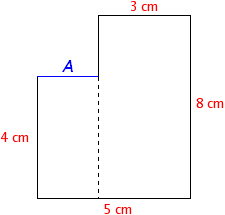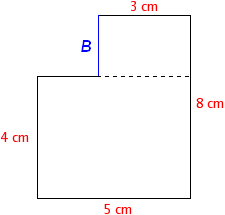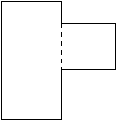
Math Practice Online > free > lessons > California > 5th grade > Perimeter and Area of Composite Figures
If your child needs math practice, click here.
For sample problems, click here.
Here are some tips for Perimeter and Area of Composite Figures, which aligns with California state standards:
Perimeter and Area of Composite Figures
For this topic, you need to know how to find the perimeter and area of rectangular shapes.
To review, see topics Perimeter and Compare Rectangle Area and Perimeter.
A composite figure is a figure that is made up of two or more basic shapes.
For example, putting two rectangles or a rectangle and a triangle together form composite figures.
Example 1: Perimeter and Area
Find the perimeter and area of each figure. Each unit is 1 cm. Label your answers in "cm".
For example, "6 cm" and "12 sq cm"
Perimeter
Add up the length of all the sides to get the perimeter.
Starting from point (1,6) and going clockwise, we get
Perimeter = 1 cm + 3 cm + 3 cm + 2 cm + 4 cm + 5 cm
= 18 cm
Area
Calculate the area of the composite figure by adding up the areas of the smaller shapes that make up the composite figure .
The figure can be divided in different ways. Here are two examples:
Area = Areas of the two rectangles Area = Areas of the two rectangles
= 3 sq cm + 8 sq cm = 5 sq cm + 6 sq cm
= 11 sq cm = 11 sq cm
Example 2: Missing Sides
The figure is made up of rectangles.
 |
 |
To find the length of side A,
look at the two rectangles that make up the figure.
Opposite sides of rectangles are the same length.
5 cm = A + 3 cm
A = 2 cm |
To find the length of side B,
look at the two rectangles that make up the figure.
Opposite sides of rectangles are the same length.
8 cm = B + 4 cm
B = 4 cm |
Copyright Accurate Learning Systems Corporation 2008.
MathScore is a registered trademark.


